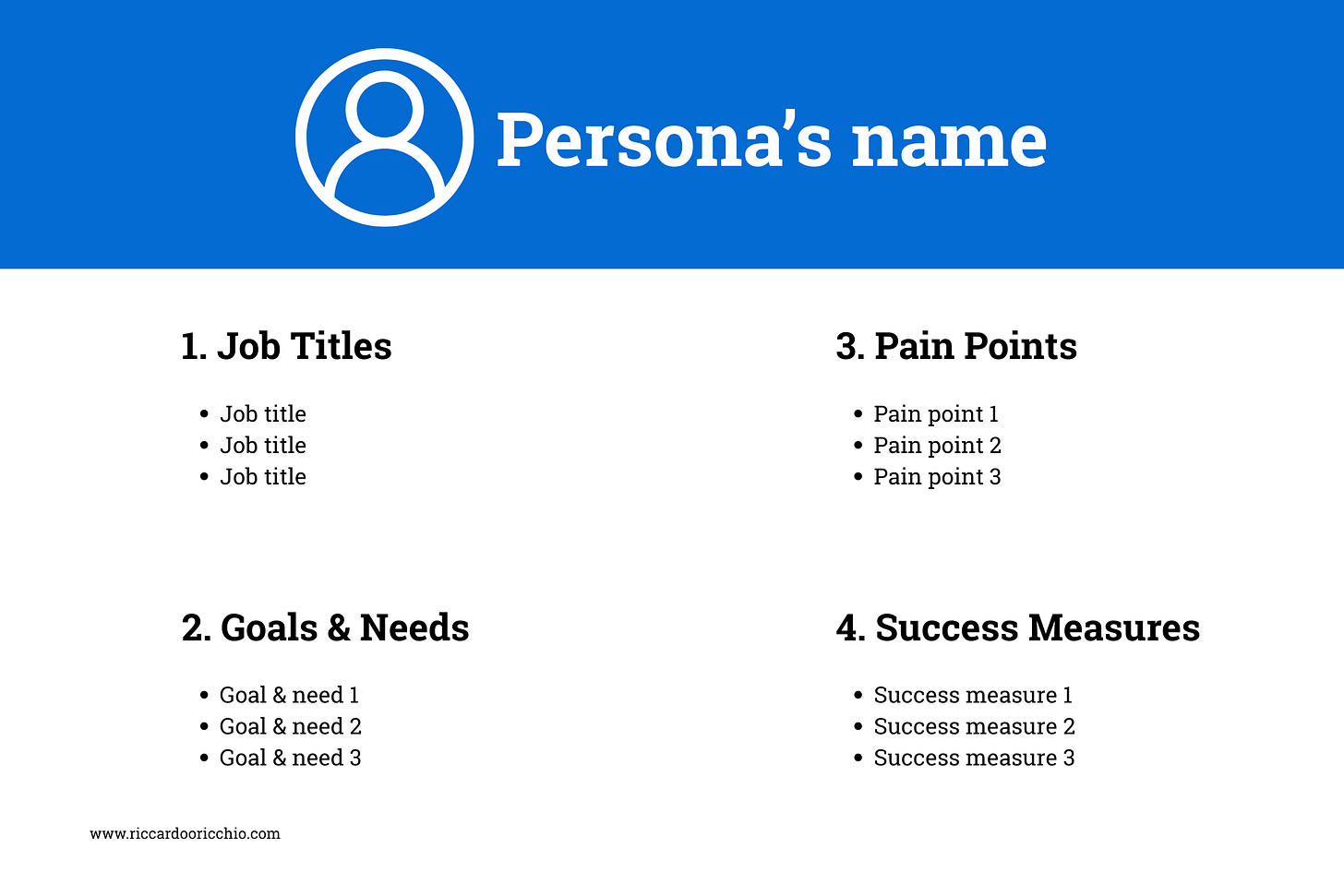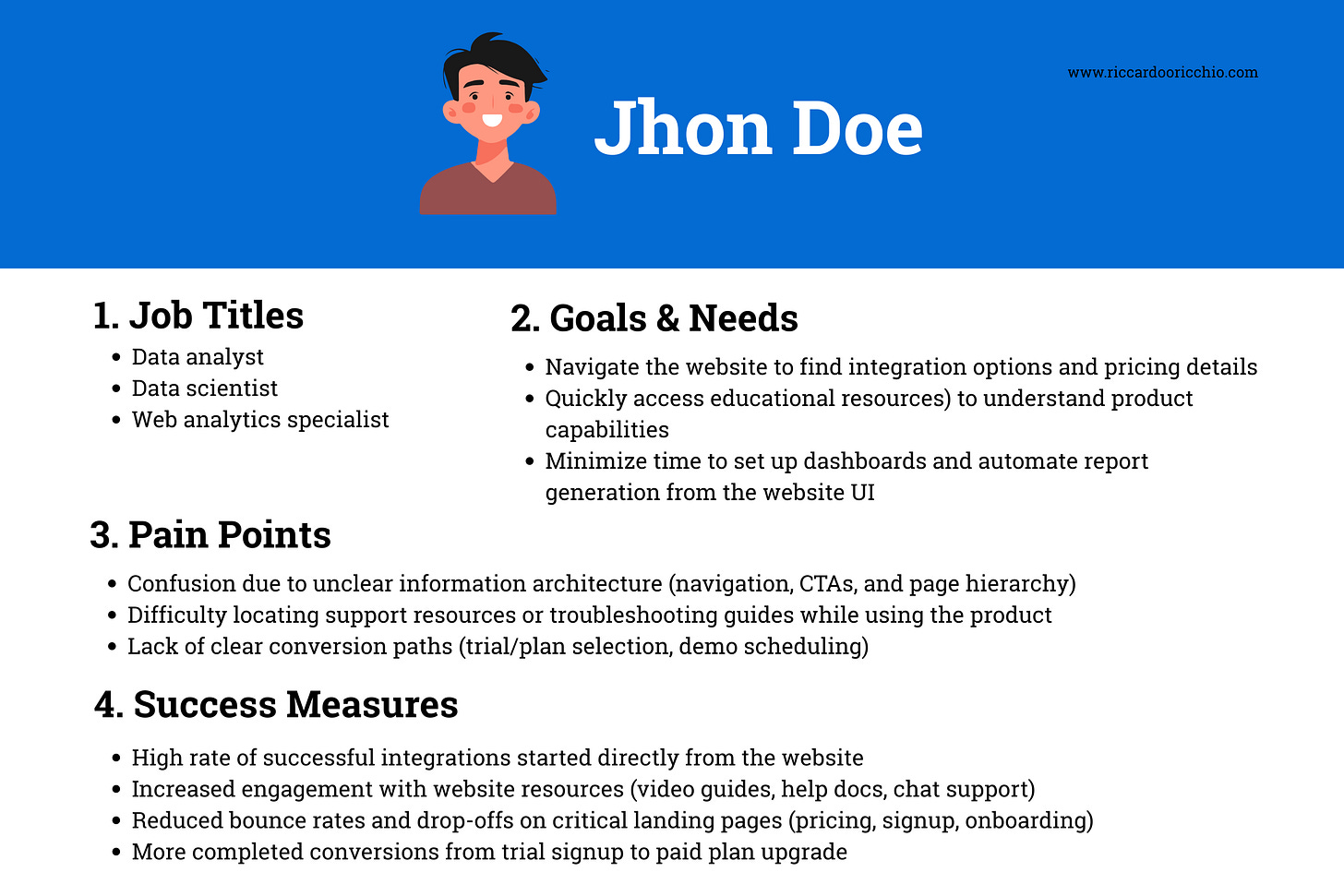User Persona Template for CRO
What a good user persona looks like for your CRO activities, best practices and elements it must include.
Once you’ve gathered as much information as possible in the user research process, it’s time to put it in order and build user personas.
What is a User Persona?
A user persona in the experimentation and CRO fields is the ideal target of your experimentation strategy. It represents the users who are navigating your website and using your product or service.
This type of persona is crafted from the user research phase, and it summarizes goals, motivations, pain points, and more.
User Persona is different from Buyer Persona
A user persona represents the person who interacts with and uses your product or website. It focuses on the needs, behaviors, and pain points encountered during real use. The defining traits of user personas involve usability, functionality, habits, and satisfaction metrics.
In contrast, a buyer persona describes the individual who makes the purchasing decision. Its priorities revolve around value proposition, pricing, benefits, and return on investment. Buyer personas are primarily used to inform marketing messages and sales strategies, since their choices dictate whether the product will be purchased.
How many user personas should I build?
This depends on many factors, such as your product and value proposition.
For instance, if your product has more than one business line, each of them probably targets a specific persona, and then you need to build multiple ones.
Or, if your value proposition talks to different types of customers, then multiple user personas are needed.
Steps to creating a user persona
There is not only one way to create a user persona, but here are the elements I often take into consideration when building it.
1. Map out roles
Throughout various user research methods (eg. interviews, customer support data, etc.), you’ll have noticed some repetitive job titles. Take note of them all because this is the 1st identificative element of your persona(s).
2. Identify goals/needs
What goals are your users trying to achieve with your solution? Your product should be able to satisfy these needs.
3. Highlight pain points
Are there any issues users encounter while navigating your website/product? Is there anything they can’t get through it, or anything slowing down their activities?
Here, the goal is to identify obstacles and frustrations your users may perceive.
4. Outline success measures
What outcomes matter the most for your users? What makes them feel the “aha” moment? What makes them accomplish their tasks?
Here, you identify your website or product’s strong points that make your users perceive success.
5. Other
Any other info you think is useful should be added to your user persona profile.
User Persona Template
In the template below, you can see each element I have discussed until now: job title, goals & needs, pain points, and success measures.
User persona example
Let’s say our product is a SaaS to create unified marketing dashboards by pulling data from multiple sources. Here’s an example of the above template filled out:
Conclusion
Creating high-impact user personas is the natural next step after gathering a wealth of insights from your user research process.
By transforming real user data into clearly defined user personas, you ensure every design, experiment, and CRO initiative is grounded in the needs and behaviors of your actual audience.
If you’d like a deep dive into proven user research methods, don’t miss the dedicated guide on user research methods.
If you found this breakdown helpful, why not stay updated with more actionable frameworks, templates, and experimentation guides?
Thanks and
Happy experimenting!



